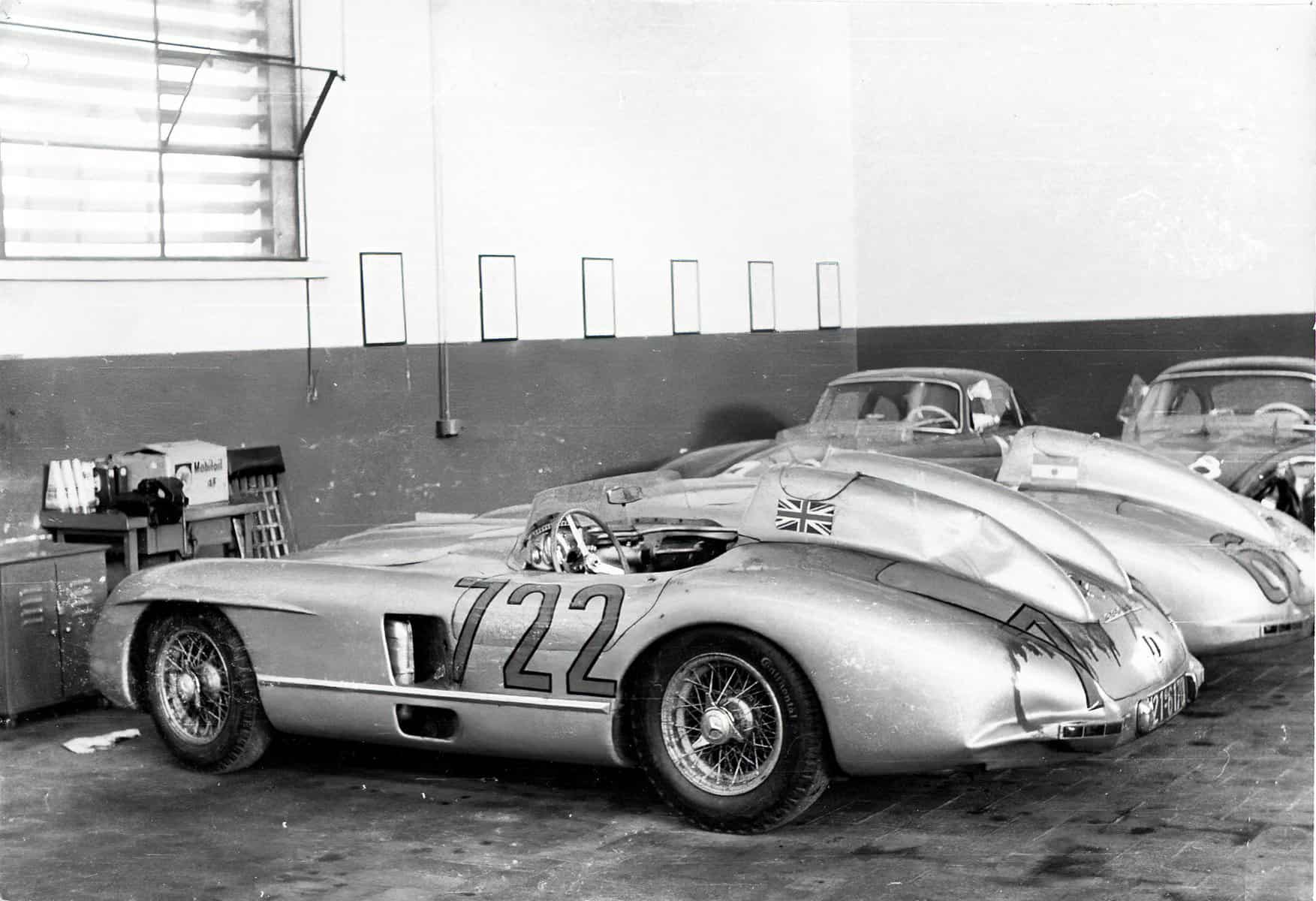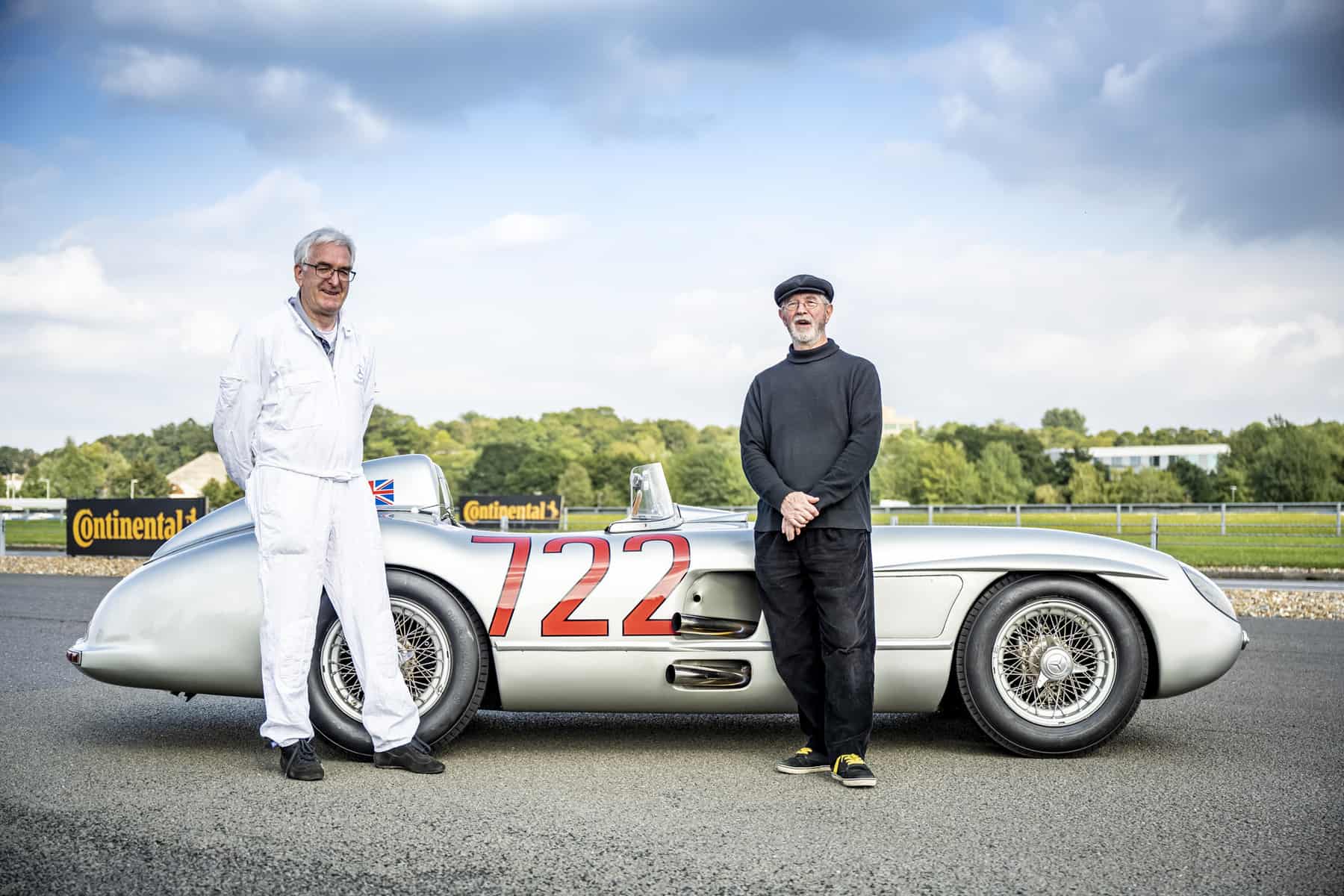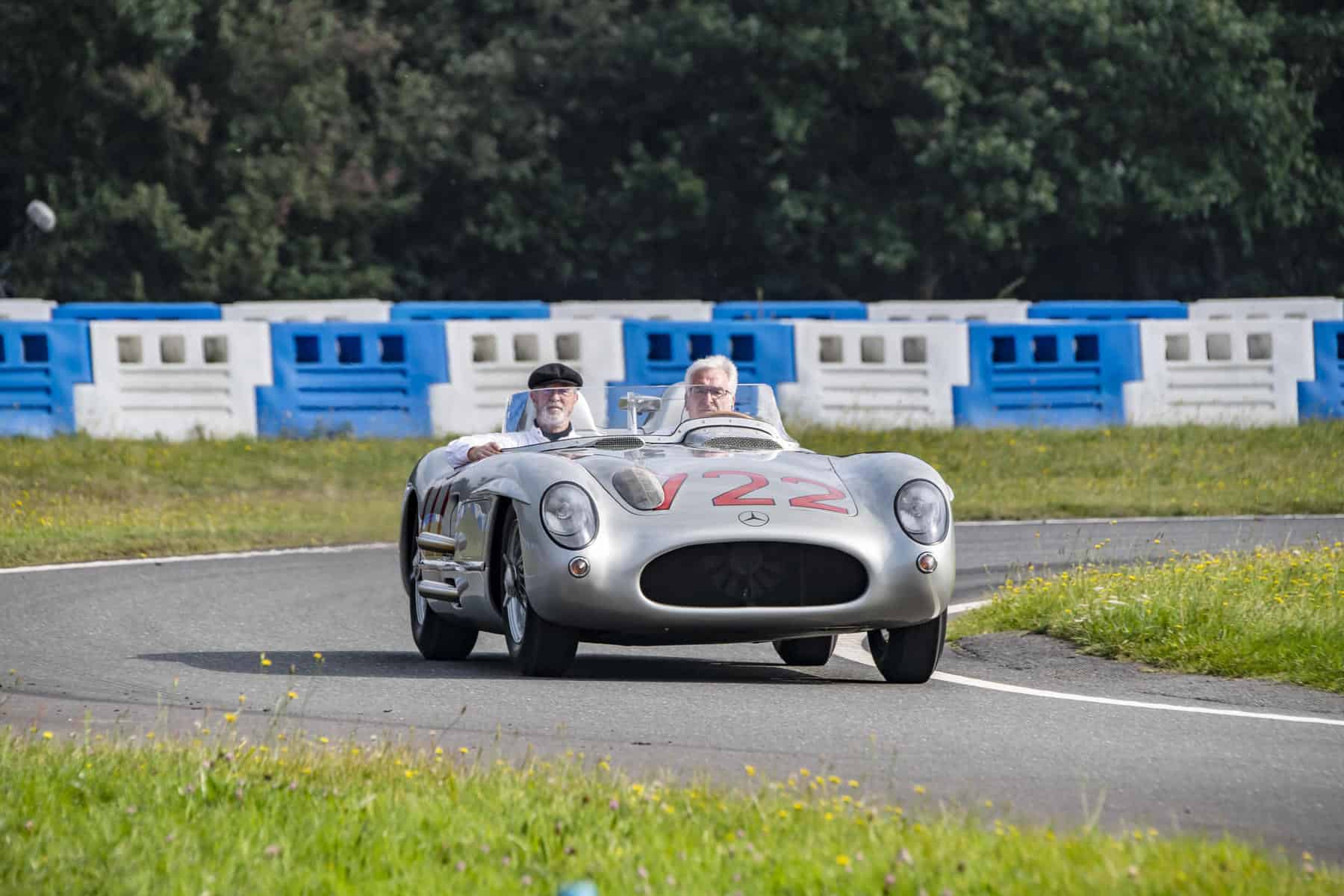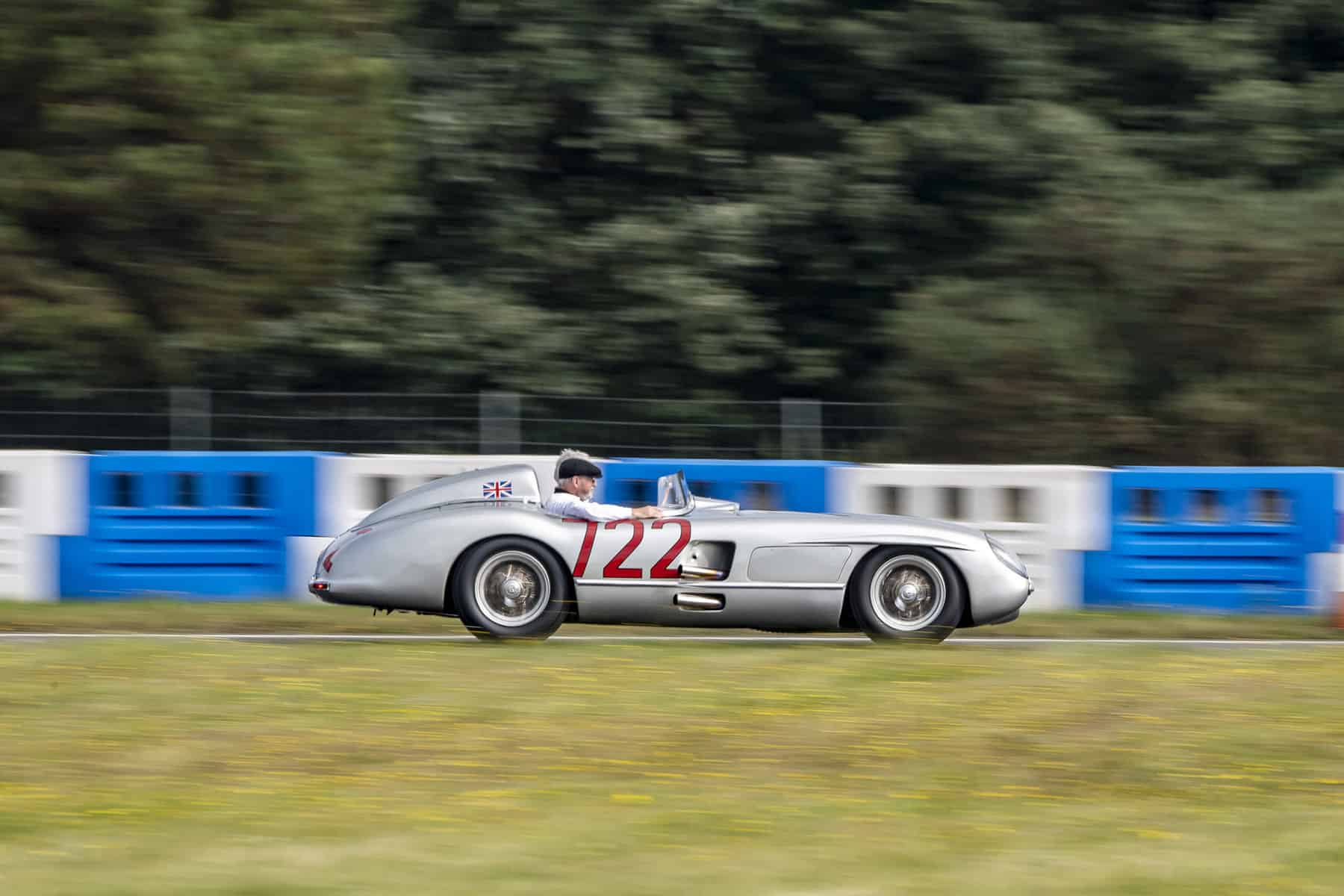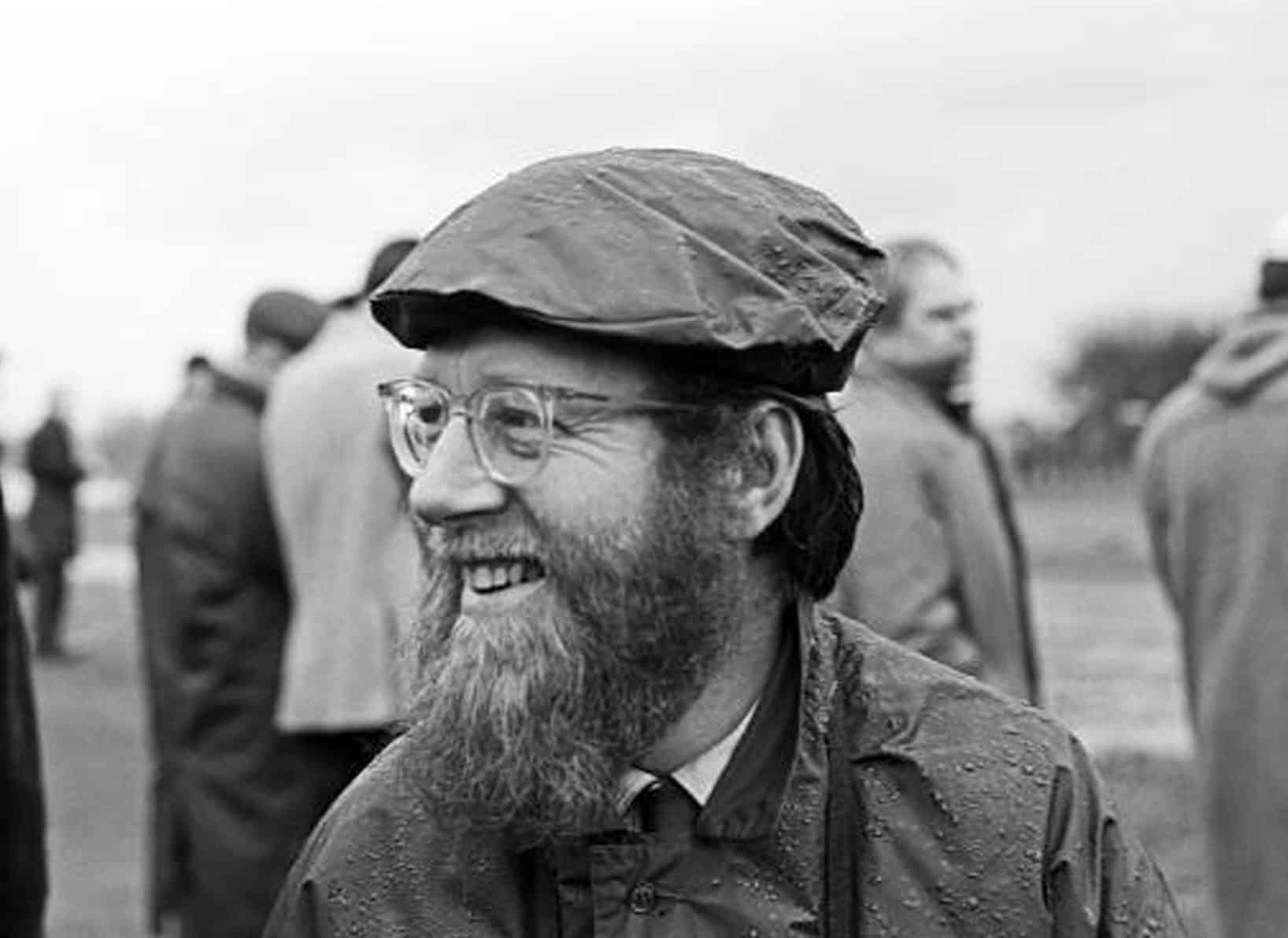Mercedes-Benz 300SLR 722
The most famous race car of all time?
BY: PETER STEVENS
It’s Sunday the first of May 1955 and I am a young boy wearing a school blazer and short trousers standing in the street with a bunch of grown-ups, my brother, and cousin Ann.
The location is Kettering, a small market town in central England, and the occasion is a large family gathering of the Jenkinson family. The event was organized by my great uncle Egbert Jenkinson, at that time a church minister in Methuen, Massachusetts, one of a long line of church ministers from both Kettering and the county of Suffolk in the east of England.
Every traceable family member was there – except one. My mother’s brother Denis had told me that he was “busy” that weekend, which would not have meant too much to most of the family, but to me it was historic – he was navigator for Stirling Moss in that year’s Mille Miglia race in Italy! Denis had kept me informed about his preparations for the race and I knew that, in his words, “He was in the finest race car in the world.” The two of them had practiced in both Mercedes-Benz sedans and 300SLs but not in the 300SLR. They had done a considerable amount of testing at the Hockenheim circuit in the car, practiced both wheel and sparkplug changing, and had learned all they could about the car. They both felt better prepared than any other competitor. Denis had been trained as an engineer at London’s Regent Street Polytechnic, where he was an extremely enthusiastic student. He and my mother, Monica, as the two youngest children, were always very close. While he was receiving an education that gained him an immediate job at the start of the Second World War as a development engineer at Farnborough working on bomb-aiming equipment, my mother was studying painting at Camberwell School of Art. Denis (the family never called him “Jenks,” which is what his elder brother Harold was called. We all called him Denis or “Farnborough Denis” because of where he lived) had, the previous year, devised a kind of roller map on which he had hand-written notes on every bend, straight, uphill, and downhill section of the thousand-mile, open-road course. Mercedes-Benz made a beautiful aluminum box with perfectly engineered rollers to properly hold his long course notes.
The Mercedes-Benz factory had entered four of their 3.0-liter, straight-eight, desmodromic valve-engined cars. To reduce crankshaft flexing, power take-off was from the center of the engine via a gear rather than at the end of the crankshaft. A rear-mounted transaxle and inboard drum brakes were also part of the specification. Each car produced around 310 hp and weighed 880 kg and was capable of more than 190 mph, according to gearing. The drivers were Fangio, driving alone in car 658; Karl Kling, also driving alone, in car 701; Herrmann/Egger in car 704, and Moss/Jenkinson in car 722. The race numbers referred to the start time of the car. At 7:28 a.m., six minutes after 722 had started, the last car, a Ferrari driven by Piero Taruffi, left the starting ramp in Brescia. Just ten hours and seven minutes after leaving Brescia, Moss and Jenkinson, in car number 722, arrived back in Brescia with a winning margin of thirty-two minutes over second-place driver Fangio. One thousand miles at an average speed of almost 100 mph on ordinary Italian roads, including mountain passes, was an extraordinary achievement. In comparison, the last-placed car, a Fiat 1100, had taken twenty-two hours and thirty-nine minutes to cover the thousand miles and finish in 279th place.
I had seen the static winning car at the Mercedes Museum a couple of times, but there was a chance of seeing it run at the 1995 Goodwood Festival of Speed. Both Stirling and Denis were to be reunited with the car and given the chance to demonstrate it up the Goodwood hill climb course. This was not an easy day for my uncle. He was unwell and had told me how special but overwhelming the occasion was because he did not expect to either ride in or see the car again. It was hard for me to see him in such a sorry state. He died less than eighteen months later.
Leaping forward to Wednesday, September 15, 2021. I had been phoned a few days earlier by a great friend, Ron Pellett, who had been a mechanic at Brabham and liked to take a week’s holiday at Le Mans in the 1980s, working as a mechanic for me and long-time friend Richard Lloyd’s Porsche 962 team. He later joined us at McLaren. He said that since he was helping prepare the 722 Mercedes for a demonstration at the Goodwood Revival the following weekend, did I want to come down to Mercedes-Benz World at Brooklands, just southwest of London, to see the car. This was to be the last public appearance of the car. Dropping everything and getting to Brooklands was essential.
I had not expected to be greeted by senior people from Mercedes-Benz Classic and M-B World who asked if I would do a little piece on camera and talk about my memories of my uncle talking about the car and the Mille Miglia victory; would I like to watch the car being driven on their test circuit? These were requests to which I had to say yes!
I was introduced to Gert Straub, who has looked after the car for more than forty years, a charming, calm, and modest man who has been a good friend of the Revs Institute for many years. When I asked him later how he felt each time he drove the car, he said that he was always relieved and thankful when he got out of the car. “Driving the car at best is okay, but at worst could be a disaster so I am always thankful to get out.”
It was wonderful to watch him power around the twisty track with such smooth confidence – the engine was loud, sharp, and appeared very responsive with its direct fuel injection system. After a couple of laps for photography, the car stopped and then Rob Halloway, who runs the Mercedes World center, asked if I wold like to ride in the car whilst Gert did some more filming laps. This was a strange moment and one that I had never thought about before. I leapt at the opportunity!
Being a pure race car that was designed principally to be used only by the driver, there is just one minimalist door on the driver’s side of the car – hence the images of Denis standing on his seat before dropping down into the car. Therefore, I am instructed to step first onto the driver’s seat, then “my” seat, before settling into the very firmly trimmed bucket seat. It’s a tight-fitting space, but the view ahead through the remarkably thick Perspex screen is captivating. The screen is old and shows sign of minute stress fractures; it is probably 15 mm thick, apparently strong enough to withstand a bird strike at 180 mph.
Gert twists the “Magneto on” key and the car starts immediately with a harsh mechanical sound (Denis always referred to sounds he did not like as “noise”!). The engine is instantly responsive but does take a minute or so to properly clear its throat, at which point its acceleration is highly impressive.
About halfway round the first lap, it suddenly dawns on me exactly where I am sitting, whose seat this is, and what happened here sixty-six years ago. The experience is so overwhelming that I consider the very real possibility that I may burst into tears. But I concentrate instead on absorbing every single moment of this unrepeatable experience.
As Gert confirms, there is not a trace of understeer, but with the responsive 3.0-liter engine a kind of relaxed low-speed oversteer is easily achieved. He tells me that sudden high-speed oversteer is certainly to be avoided! The 16-inch diameter drum brakes are impressive for a car this old and with a mechanical servo system are never hard work. The side forces generated on the twisty Mercedes track feel much greater than I had expected. In every aspect this gives the impression of a very finely developed race car in the way that most of its contemporaries do not – it is not a one-lap qualifying special but an indestructible racing machine.
I soak up every aspect of the ride. Watching Gert appear so at ease at the wheel, so confident in his gear changes, I am reminded of what Denis said to me about never tiring of watching the “Golden Boy” at work. On more than one occasion during that great Mille Miglia drive, 722 arrived at the entrance to a village traveling at what felt like “far too fast.” With a bit of an air of detachment, my uncle would watch Moss sort the situation out. He described his thoughts as, “this is going to be interesting. Now I am going to watch the master at work!” Such was his confidence in Moss that he never felt afraid, and Moss for his part often later told me he had complete confidence in Denis’s notes. If he was signed (it was impossible to speak over the motor’s bellow) that an unseen corner was “flat in third” then that is what he did. When time allowed, Denis took on the role of “keen observer.” On one occasion he and Moss were traveling at probably around 190 mph and slowly overtook an airplane that was filming them from not far above. He described the moment to my mother and me: “That is when I realized that I was traveling in another, surreal dimension.”
Sitting in the car with the engine turned off, I closed my eyes and savored the past few minutes and considered what a direct connection I had with this remarkable machine. Not only had Chassis 04 won the 1955 Mille Miglia, but in September 1955 – driven once again by Moss, partnered by the American driver John Fitch – it won the 1955 RAC Tourist Trophy race held on the Dundrod road circuit. Crewed by Moss and Peter Collins it had also won the 1955 Targa Florio in Sicily, where it covered 936 kilometers in nine hours forty-three minutes. This was a race that Mercedes took very seriously. For the October event there was a Mercedes 300 SL, a 190 SL, a 200 saloon, a 300 SLR – even Ulenhaut’s unique, personal 300 SLR Coupe for the team’s seven drivers to practice in.
On Monday, September 20, 2021, both 722 and Gert Straub retired from their active lives with Mercedes-Benz Classic. The car encapsulates all these historical moments in its very fabric. Gert has all those memories of the car without the anxieties of bringing it back in one piece. And I have had the enduring experience of sitting where my favorite uncle once sat – even if for only ten minutes, and not ten hours.
Top photo: Mercedes-Benz World and Barry Hayden.



